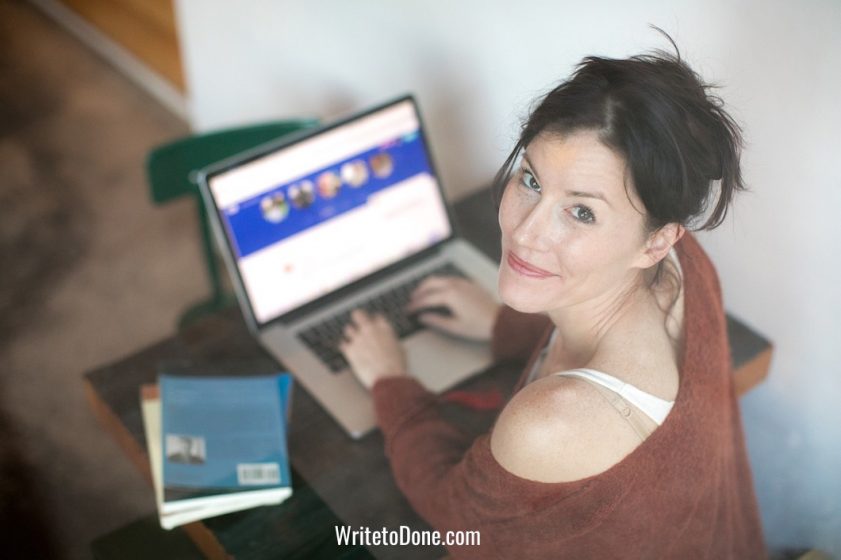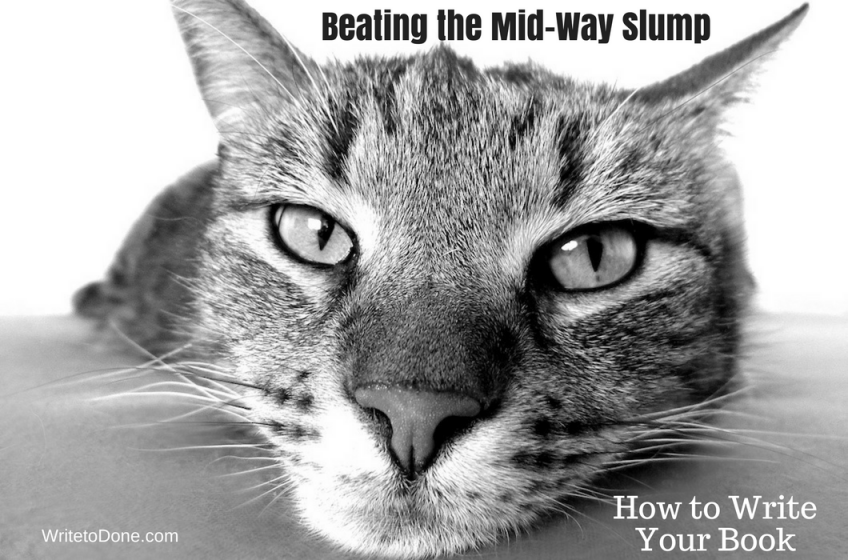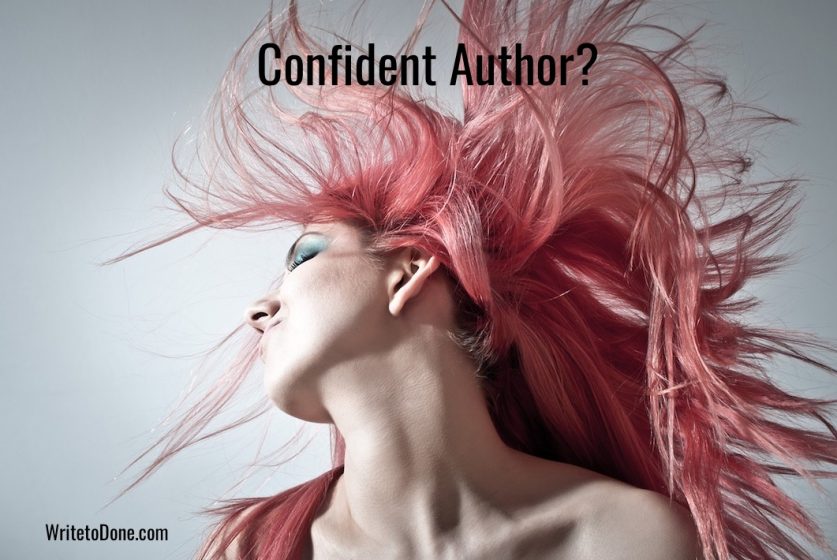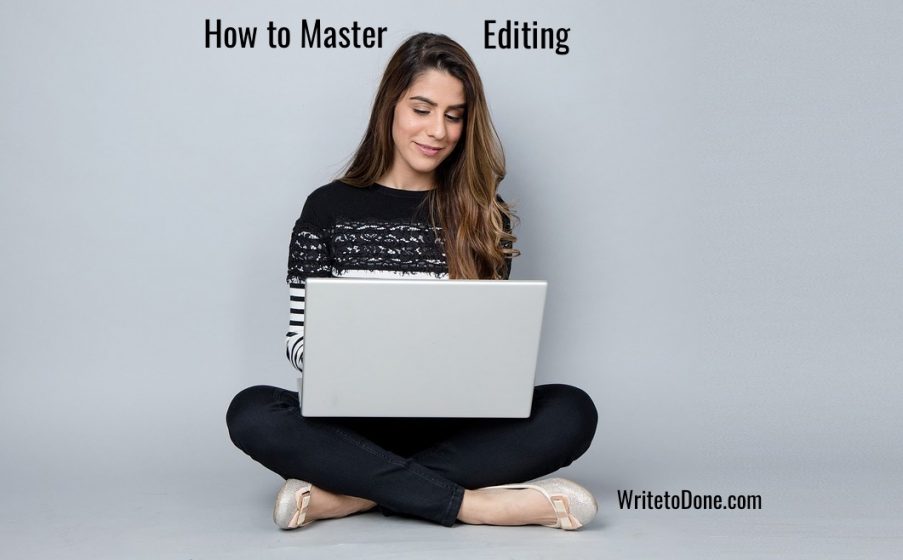How to Write and Publish Your First Book 1: The Secret of Agile Development
By Mary Jaksch

Have you wondered how to write and publish your book?
So when are you going to do it?
After all, 82% of all Americans think they have a book in them, but less than 1% actually write it. I expect statistics are similar in other countries.
What group do you want to belong to – the huge group that dreams about writing a book, or the select group that actually does it?
A few months ago, I decided this year would be the time to finally write the book I’d been thinking about for a while. And I’m planning to do a series of case studies for you t0 see the ups and downs of my journey and follow along with your book so that you learn how to write and publish your book.
What is the key to getting going?
Last year, I was dithering between writing a novel and writing a nonfiction book. As a consequence, I got stuck in no-mans-land. And I was held back by fears of not being good enough.
But I found a way through the dilemma by using a strategy that cleared the way forward. Watch the short video below:
As you can see, finding out what you really want to write is crucial. Once you’re clear on that front, it’s time to develop strong goals that will carry you through the project.
Tip: Think of writing a series of books around a central focus.
If you want to write a novel, think about creating a protagonist who can be the focus of multiple novels. (To find out how to go from idea to plot of a novel, check out the series, Fire up a Stalled Novel.
As a blogger, it’s easier to write nonfiction books, so I decided to write a series about Youthful Aging. It’s something I’m passionate about and I can think of a whole lot of sub-topics, like fitness, nutrition, health, vitality, and so on.
If you want to write a novel, think about creating a protagonist who can be the focus of multiple novels. (To find out how to go from idea to plot of a novel, check out the series, Fire up a Stalled Novel.
As a blogger, it’s easier to write nonfiction books, so I decided to write a series about Youthful Aging. It’s something I’m passionate about and I can think of a whole lot of sub-topics, like fitness, nutrition, health, vitality, and so on.
But how to get a handle on the process of writing and publishing a book?
I must admit, I sometimes feel overwhelmed by the huge mountain in front of me. What helped me was reading an article about software development.
Waterfall Development versus Agile Approach
When you develop software, there are two different approaches. One is called waterfall and the other agile. According to experts, waterfall is a traditional approach —where development is handled as a linear series of events from conception to production.
If we translate the waterfall process into writing a book, it means spending a year or two on creating a substantial book, publishing it and only then getting feedback from readers.
The agile development model focuses on producing minimum viable products (MVPs) over set periods of time while improving each iteration. A sprint, in agile software development, is a set period of time during which specific work has to be completed.
In terms of writing books, this model can mean breaking up a big topic into sub-topic and creating multiple shorter books as sprints, instead of putting effort into creating one larger book.
There are many advantages in using the agile development framework:
- Shorter books are more manageable to write
- Feedback from readers occurs directly after each publication and can shape the following book in the series.
- New research can be incorporated as the series evolves.
- Shorter books are getting more traction on Kindle.
- Multiple books on Kindle are a way to increase sales and income.
- As the series evolves, you can develop a dedicated readership.
As you can see, agile development can work well for nonfiction books. However, it can also work for novels. I have recently read quite a few novels which were created in a similar way, where each book is like an installment of a grand story.
Once you have created a series of shorter book, you can also compile them to create a longer book.
My plan is to write a series of books with about 12,000 words each. This means that each draft will have about 18,000 words and then be edited down to 12,000 words.
Are you going to write and publish YOUR book?
If you are keen to get going and know how to write and publish your book, here are your next steps:
Step 1: Make a decision on whether you want to write a nonfiction book, novel, or memoir.
Step 2: Make notes on how to break up the topic or story into parts, according to the agile method.
I’ll be back soon to continue this case study and write about the next steps.
How to Write and Publish Your First Book 2: Beat the Mid-Way Slump

Do you sometimes feel a drop in motivation? Don’t worry, it’s natural to experience the mid-way slump when writing a book.
When you first start, you tend to feel both scared and excited. At that point, you just can’t imagine how to write and publish your first book. Part 1 of this series shows you how to get started: How to Write and Publish Your Book 1: The Secret of Agile Development.
As you may know, I’m in the process of writing a book on Youthful Aging, and I’m documenting my journey in a series of articles and videos. This part is about overcoming the mid-way slump.
Once you’ve watched the video, keep on reading. The story of Cliff Young will inspire you. At sixty-one years old, Cliff appeared at the start of an ultra-marathon in his work boots and torn trousers. What happened next will surprise you!
But first, watch the video below to learn the tips and tricks of overcoming the mid-way slump.
I’ve found that talking to others about the ideas I’m writing about is very helpful because it animates me and revs up my motivation. In my book about Youthful Aging, I tell stories of people who broke the mold of aging and went on to complete seemingly impossible tasks.
Here is a story that applies to the journey of writing and publishing a book:
Cliff Young was a sheep farmer in Australia. One day, he lined up for one of the world’s most grueling endurance races, the Sydney to Melbourne ultra-marathon over 875 kilometers.
The sixty-one-year old showed up in overalls and work boots. A hush fell when Cliff went to the registration desk and picked up a race number.
“You gonna race?” One of the competitors called out.
“Yep, I’ll give it a go,” Young said.
“In your boots?” the guy continued. People sniggered.
When the starter gun sounded, the field of fit, young guys breezed past him. The crowd laughed out loud when they saw that Cliff couldn’t even run properly. He seemed to shuffle along at a snail’s pace.
In this race, competitors would usually complete the course over five days, running about 18 hours a day and sleeping for the remaining 6 hours. But Cliff snatched only a short nap and covered over 200 miles in the first 48 hours. When his competitors woke up after the first night, they were shocked to hear that Cliff had overtaken them and was now way ahead. And he kept on running like this with only minimal stops, extending his lead each day.
Finally, Cliff Young won the race, shattering the previous race record by more than two days. As you can imagine, he became a national hero in Australia. His gait, the Young Shuffle was later adopted by some ultra runners because it saves energy over long distances.
What can we learn from Cliff Young? He believed in himself, although others laughed at his goal of completing an impossible task. Maybe you too have dreams of trying something that seems impossible. Like writing and publishing your book, for example.
When you waver and doubt yourself, remember Cliff Young and keep going to complete your book!
How to Write and Publish Your First Book 3: Vanquish Self Doubt and Confusion

When you write and publish your first book, you’ll find it is a peak experience.
If you have the slightest inclination of writing a book but have put it off for another year or another decade, start now and make it happen. Writing a book is satisfying, but I must confess, it’s also stressful and fraught with challenges.
At times, my journey of writing The Secrets of Youthful Aging has seemed like paddling a canoe in rough seas with sharks circling and the destination looking like a smudge on the horizon.
The two main ‘sharks’ are self-doubt and confusion. Luckily, I have found strategies to deal with these two challenges, and the destination—which is to publish my book successfully—is now within reach.
In this post, I’ll share with you what has helped me most.
In this post, I’ll share with you what has helped me most.
How to Deal With Writer’s Doubt
One of the most difficult barriers facing an author is self-doubt. Writer’s doubt comes in waves. Whenever you read a book of a similar genre, you think your book won’t measure up.
Each time you look at a first draft of a chapter, your writing seems crummy and pitiful. At those moments, you conveniently forget that every first draft is ugly. It’s only when you later edit your writing and polish it that your writing can start to shine.
To get out of the downward spiral of doubt, ask yourself the following question:
Does my writing fulfill its purpose?
If you write a thriller, the purpose of your writing is to keep readers glued to the page with a heightened pulse. If you write an inspirational book (like me), you want your readers to feel inspired and uplifted.
You don’t need to be a brilliant writer. All you need to do is create a book that fulfills its purpose.
These 2 Strategies Will Squash Writer’s Doubt
Self doubt destroys the joy of writing. It can stop you from being creative and make you end up staring at an empty page. The trigger for writer’s doubt is a wonderful motivation gone rogue: the wish to write well.
You might imagine that wanting to write well is a useful motivation, but it has a dark side. When you want to write well, you tend to put words on the page and then immediately try to improve what you’ve written. The problem is that every time you stop to edit, you lose the flow of writing and feel more and more frustrated. The two following strategies are a powerful antidote to writer’s doubt.
Strategy #1: Write all the chapters first before editing.
When I first started writing my book on the secrets of youthful aging, I started editing the first chapter the day after writing it. This made me feel grumpy and self-conscious, so I quickly changed my workflow. I decided to write all the chapters first, and only then start revising.
This allowed me to get into the flow of writing. I found that it’s fine to leave chapters in a rough state and move on to the next one. I revised each chapter a couple of times after I had completed all of them, so it didn’t matter if they were a bit rough at first.
What I noticed during the first revision was that my writing was much better in the later chapters. This goes to show that regular writing increases the quality of your output. However, in the process of writing, output is more important than quality as you can see in the second tip.
Strategy #2: Focus on mass, not quality.
If you set yourself a target for a daily word count and stick to it, your doubts will fade into the background. Your focus will be on writing the daily amount of words, and not on the quality of the text you’ve created.
Each time I hit the required number, I felt satisfied. At that point, I didn’t care how ‘good’ or ‘bad’ my words were. All that mattered was that I got them onto the page, ready to be revised at a later stage. I use Scrivener LINK and I loved the little bell that sounds when the word count target is met!
Each time I hit the required number, I felt satisfied. At that point, I didn’t care how ‘good’ or ‘bad’ my words were. All that mattered was that I got them onto the page, ready to be revised at a later stage. I use Scrivener LINK and I loved the little bell that sounds when the word count target is met!
How to Deal With Confusion
Once I had completed the chapters of my book, I started writing the introduction. I tried to write it several different ways but I ended up in a muddle.
Not only was I confused about how to write the introduction, I felt overwhelmed by the whole process of getting the book print-ready. It seemed like Mount Everest looming ahead, and the summit seemed unreachable, obscured by clouds.
At this point, Laura Tong, the Editor of WritetoDone, suggested buying Chandler Bolt’s book
Book Launch.
Not only was I confused about how to write the introduction, I felt overwhelmed by the whole process of getting the book print-ready. It seemed like Mount Everest looming ahead, and the summit seemed unreachable, obscured by clouds.
At this point, Laura Tong, the Editor of WritetoDone, suggested buying Chandler Bolt’s book
Book Launch.
All my confusion evaporated as soon as I opened his book. It was as if Chandler reached out, took me by the hand, and led me through the whole process of writing my book and getting it print-ready, and then prepare it for publishing it on Kindle.
I devoured the chapter on how to write an introduction and immediately took the intro I had written, pulled it apart, and put it together again in a way that made sense. If you are thinking of writing a book, read Chandler Bolt’s Book Launch, or, if you get the opportunity, sign up to his webinar,
How to go from Blank Page to Published Author in 90 Days… And Use Your Book to Grow a 6-Figure Income.
How to go from Blank Page to Published Author in 90 Days… And Use Your Book to Grow a 6-Figure Income.
In his book, Chandler devotes quite a few chapters to the editing process. He shows exactly how to find (and test) an editor, and then tells you exactly how to work with her or him.
This is the territory I’ve just stepped into.
A few days ago, I finished my revised draft and it was time to send it to a professional editor. Luckily, I already knew an excellent editor for my book. It’s Laura Tong, the Editor of WritetoDone. When I sent her my draft, I was shaking.
You see, the moment when you are on the brink of letting someone else read your book you feel terrified! Thoughts like this swirl through your mind: I’ve poured myself into this book, and now someone else is going to read it. What if they don’t like it?
When you get to this stage, take a deep breath and consider carefully who your first reader will be. Don’t give your book to a family member or a close friend. They are too close to you. The best person to send it to is the editor you have chosen, following Chandler’s blueprint or a fellow writer.
When you get to this stage, take a deep breath and consider carefully who your first reader will be. Don’t give your book to a family member or a close friend. They are too close to you. The best person to send it to is the editor you have chosen, following Chandler’s blueprint or a fellow writer.
Once the book is in the hands of a professional editor, there are two parts to the editing process. First comes the content edit where the editor checks the impact of the book and the overall structure and flow. Then comes the copy edit where the editor checks for grammar and spelling.
My editor, Laura Tong, wrote back to me about the impact of my book:
First read through, I separated myself from knowing you and our conversations on this topic. I blotted out the fact that we’ve met so I could see how the book, and the author, left me feeling.
This was a single focus read to gauge my honest reaction. So how did I feel? Inspired. Encouraged. Excited. Awed. Filled with hope. And hungry for more of each story, those of the Youthful Agers and the Author – she struck me as just the kind of person I want to meet at a dinner party and still be chattering with long after the sun has come up. Next read through will be for consistency, pace, and flow. Can’t wait!
As you can imagine, I breathed a sign of relief…phew!
This was a single focus read to gauge my honest reaction. So how did I feel? Inspired. Encouraged. Excited. Awed. Filled with hope. And hungry for more of each story, those of the Youthful Agers and the Author – she struck me as just the kind of person I want to meet at a dinner party and still be chattering with long after the sun has come up. Next read through will be for consistency, pace, and flow. Can’t wait!
As you can imagine, I breathed a sign of relief…phew!
Once both the content edit and the copy edit are complete, I’ll invite twenty people as beta readers to get more feedback. The invitation will go out via email. Stay tuned!
How to Write and Publish Your First Book 4: Master Editing

If you want to publish a book, you need to master editing. Watch the video below to see how to go about the editing process.
Editing can seem like an endless process, but you can break it down into manageable chunks.
In Michael Ende’s book ‘Momo’, Beppo the Roadsweeper gives some advice about this:
“Sometimes, when you’ve a very long street ahead of you, you think how terribly long it is and feel sure you’ll never get it swept.
And then you start to hurry. You work faster and faster and every time you look up there seems to be just as much left to sweep as before, and you try even harder, and you panic, and in the end, you’re out of breath and have to stop–and still the street stretches away in front of you.
That’s not the way to do it.
You must never think of the whole street at once, understand? You must only concentrate on the next step, the next breath, the next stroke of the broom, and the next, and the next. Nothing else.
That way you enjoy your work. And all at once, before you know it, you find you’ve swept the whole street clean, bit by bit.”

No comments:
Post a Comment